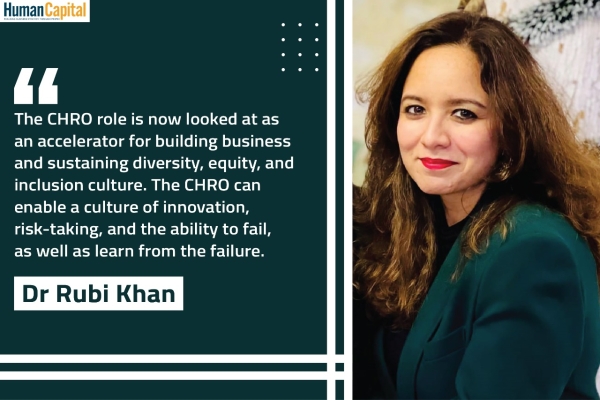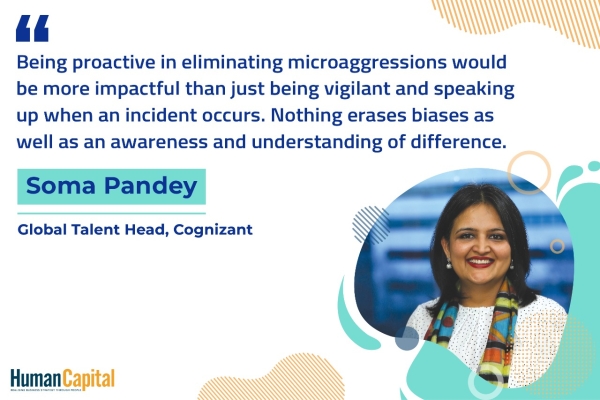Being aware, owning up, and being accountable are behavioural traits which often decide how far an individual or an organisation will go. And therefore, it is important to build mechanisms to ensure this happens at every level.
Surinder's was a rags-to-riches or AM to Country Head story. Joining the outsourcing business with a background in Hotel Management, he would initially go to office on a two-wheeler. Nineteen years later, as the Country Head of a multi-billion dollar MNC in the outsourcing business, a seven series BMW was the company gifted vehicle of his choice. However, things were getting a bit difficult now.
Business acumen, great insight into the workings of businesses, and a rough and ready way in dealing with people had delivered dividends, and ensured quick growth in a career that was marked by a blistering pace of growth. But a weak educational foundation, hubris in having reached such an elevation in life, and an inability to empathise took a telling on Surinder's career. When the position for the EMEA (Europe, Middle East and Africa) Head was open, the Country Head for Philippines was chosen over Surinder, though he had delivered a bigger slice of the revenue pie and with better margins. Bias, his mind screamed. Anti-Indian, said the other half of his brain. But no part of his head or heart was willing to look within and diagnose what was wrong in reality.
From Individual to Organisation
Organisational growth can come from a great business opportunity or a novel product, but sustaining growth is a different ball game in itself. At the heart of organisational growth is the growing individual. An individual who understands her strengths, but also her areas of improvement - so to say a personal SWOT (strengths, weaknesses, opportunities, and threats analysis) - is well equipped for development. And this emerges as the stepping stone for change and growth.
It is the sum of individuals that comprise an organisation. A self-aware leadership will helm an organisation well, a leader without an ability to introspect may not do too well.
However, introspection is easier said than done. Instead of commencing elaborate learning architectures, it would be a good idea for Learning and Development departments to help set up mechanisms, which aid individuals and teams to introspect. Those of us familiar with the Johari Window instrument (see diagram), know the most dreaded box is the one at the top right-hand corner, which tells us about our Blind Side. The bigger the blind side, the more we need to look within ourselves to understand what we can do to improve. As the definition goes, the blind side is one that shows that side of yours that the others can see, but not you. And if this is a negative characteristic, then all the more reason you should know about it, and address it ASAP. If we imagine a worst case scenario, it is like walking around with an open zip. It is visible to the others that the zip is open, but you are focused and happy on the new shirt you are wearing !
Self Awareness is Key
Self awareness is a key ingredient on the road to growth. Self awareness rings true for individuals as it does for teams and organisations. But if an individual is not self aware, then the harm is limited, unless the individual is a senior leader. However, it is important for teams and organisations to develop mechanisms to institutionalise introspection and self awareness.

Huddle Up
A common and fairly simple practice when done well yields positive results are the daily huddles witnessed in manufacturing floors and in call centres. Even Brainstorming or GE's famous Workout method are known to throw up uncomfortable insights and ways to improve. But some organisations have converted this into a fine art. The Isreali Air Force is known to have taken it to the next level. Every day teams are known to review their latest flights. They are expected to answer three key questions:
1. What Happened? Avoid stories. Keep it short.
2. Why did it happen? Point out accountability and your role.
3. How can you improve? Answers need to be specific and actionable.
Of course, for the huddles or de- briefs to be successful, a culture of openness and an absence of finger pointing are essential. When a mistake happens, the first question need not be, who has done this (the occurrence of this question is so high, that one could almost call it a default reaction). Instead, it needs to be, how can this be fixed, and next, what is the learning so that it does not recur.
Individuals as well as teams and organisations need to make choices, and take suitable steps. As the French playwright Moliere has said, "It is not only what we do, but also what we do not do, for which we are accountable."
It is time to own up for ourselves, for our teams and, indeed, our organisations. Owning up opens energy flows, provides insights, and higher effectiveness.
Take the Israeli Air Force example mentioned above. Their pilots meet the highest standards in half the average time required in other countries (250 hours versus an average of 450 worldwide), and they have reduced the number of aircraft accidents by 95% since the 1980s. So, seek to develop your self-awareness, institutionalise mechanisms for team connects, and collective stock taking.
Meanwhile, better late than never, Surinder has realised he has blind spots, which will not go away by applying vanishing cream or by wallowing in the ever-growing circle of his hangers-on. He has reached out to a senior coach and is learning to do, what Socrates had recommended more than two millennia ago, know thyself.

Do you look forward to permanently working from home after the pandemic subsides?
Trending
-
SBI General Insurance Launches Digital Health Campaign
-
CredR Rolls Out 'Life Happens' Leave For Its Employees
-
Meesho Announces 30-Week Gender-Neutral Parental Leave Policy
-
Microsoft Unveils Tech Resilience Curriculum To Foster An Inclusive Future
-
60% Indian Professionals Looking For Job Change Due To COVID: Survey
-
SpringPeople And Siemens Collaborate For Digital Transformation Push
-
86% Professionals Believe Hybrid Work Is Essential For Work Life Balance: Report
-
Almost 1 In Every 3 People's Personal Life Affected Due To Work Stress
-
Meesho Rolls Out Reset And Recharge Policy For Employees
-
80% Of Talent Leaders & Academics Say Pandemic Changed Skill Needs For Youth: Report
-
Hero Electric Rolls Out 'Hero Care' Program For Employees
-
Human Capital In Collaboration With ASSOCHAM Hosts Virtual Conference
-
IKEA India, Tata STRIVE Collaborate To Create Employability And Entrepreneurship Opportunities
-
SAP India, Microsoft Launch Tech Skilling Program for Young Women
-
DXC Technology, NASSCOM Collaborate For Employability Skills Program
-
Lenskart To Hire Over 2000 Employees Across India By 2022
-
Mindtree Launches Learn-and-Earn Program
-
Tata AIA Extends 'Raksha Ka Teeka' To Its Employees
-
Swadesh Behera Is The New CPO Of Titan
-
NetConnect Global Plans To Recruit 5000 Tech Professionals In India
-
Hubhopper Plans To Hire 60% Of Indian Podcasters By 2022
-
Corporate India Needs More Women In Leadership Roles: Report
-
Aon to Invest $30 Million and Create 10,000 Apprenticeships by 2030
-
Tech Mahindra Launches ‘Gift a Career’ Initiative for Upskilling of Youth
-
40% Women Prefer Flexible Working Options in Post-COVID World: Survey
-
3 out of 4 companies believe they can effectively hire employees virtually: Report
-
Vodafone , CGI and NASSCOM Foundation launch digital skills platform
-
Odisha: Bank, postal employees to deliver cash for elderly, differently-abled persons
-
Skill India launches AI-based digital platform for "Skilled Workforce"
-
Hiring activity declines 6.73% in first quarter: Survey
-
70% startups impacted by COVID-19 pandemic
-
Bajaj Allianz Life ropes in Santanu Banerjee as CHRO
-
Over 70 Percent MSMEs look at cutting jobs to sustain businesses
-
93 Per Cent employees stressed about returning to office post-lockdown
-
Johnson & Johnson India announces family benefits for same gender partners
-
Indian firms turning friendly towards working mothers
-
Welspun India names Rajendra Mehta as new CHRO
-
Wipro partners with NASSCOM to launch Future Skills platform



Human Capital is niche media organisation for HR and Corporate. Our aim is to create an outstanding user experience for all our clients, readers, employers and employees through inspiring, industry-leading content pieces in the form of case studies, analysis, expert reports, authored articles and blogs. We cover topics such as talent acquisition, learning and development, diversity and inclusion, leadership, compensation, recruitment and many more.
Subscribe Now












































Comment